Understanding Pediatric Eczema and the Importance of Routine Skincare
Pediatric eczema, or atopic dermatitis, is a chronic skin condition that affects a significant number of children, often starting before age six. Characterized by dry, itchy, and inflamed patches of skin, eczema can disrupt a child's comfort and daily activities, including sleep. While there is no cure, establishing a consistent daily skincare routine is pivotal in managing symptoms, preventing flare-ups, and strengthening the skin barrier. This article explores essential practices, products, and strategies to optimize daily care for children living with eczema.
Foundations of an Effective Daily Skincare Routine for Pediatric Eczema
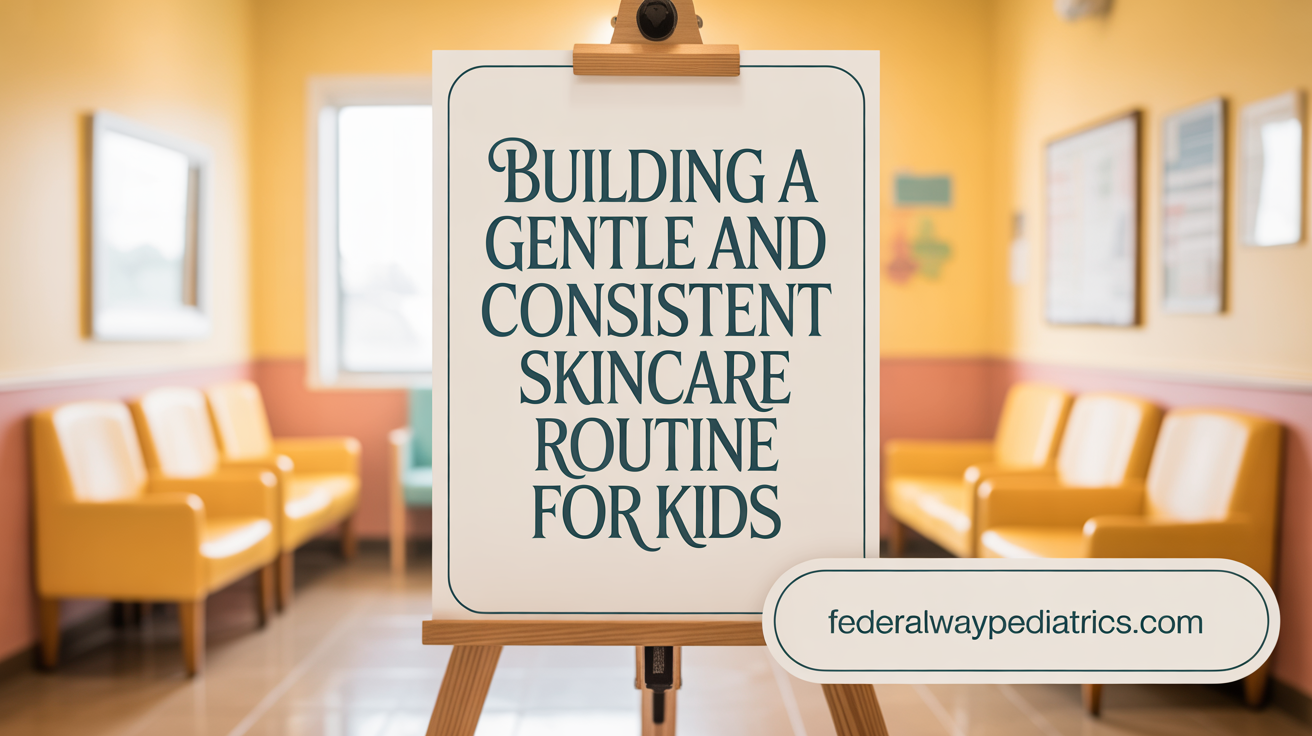
What is the best daily skincare routine for managing pediatric eczema?
Managing eczema in children requires a thoughtful and consistent daily skincare routine. The foundation begins with gentle cleansing using lukewarm water and mild, fragrance-free products such as Flexitol Happy Little Bodies Eczema Body Wash. This helps to remove irritants without stripping the skin of its natural oils.
After cleansing, it’s important to gently pat the skin dry rather than rubbing, to avoid damaging the delicate skin barrier. Applying a thick, emollient moisturizer immediately while the skin is still damp is essential. Products like Flexitol Happy Little Bodies Eczema Moisturizing Lotion or heavy ointments like petroleum jelly form a protective layer that seals in moisture, reinforcing the skin’s natural barrier.
Involving children in their skincare can be made fun and engaging by using visual schedules, songs, or playful routines. This not only reduces resistance during application but also helps children understand the importance of taking care of their skin. Dressing children in loose, breathable fabrics such as cotton, and washing new clothes beforehand with hypoallergenic detergents, reduces exposure to irritants.
Prompt treatment of flare-ups with prescribed medications ensures inflammation is controlled and prevents worsening. Working closely with healthcare providers allows for monitoring the child's condition, avoiding triggers like dust mites or harsh soaps, and adjusting routines as necessary.
Supporting children through positive reinforcement—praise or small rewards for following routines—encourages adherence. Education about their skin condition and consistent routines help children feel more secure and better equipped to manage their eczema every day.
The Critical Role of Moisturizing: Timing, Types, and Techniques
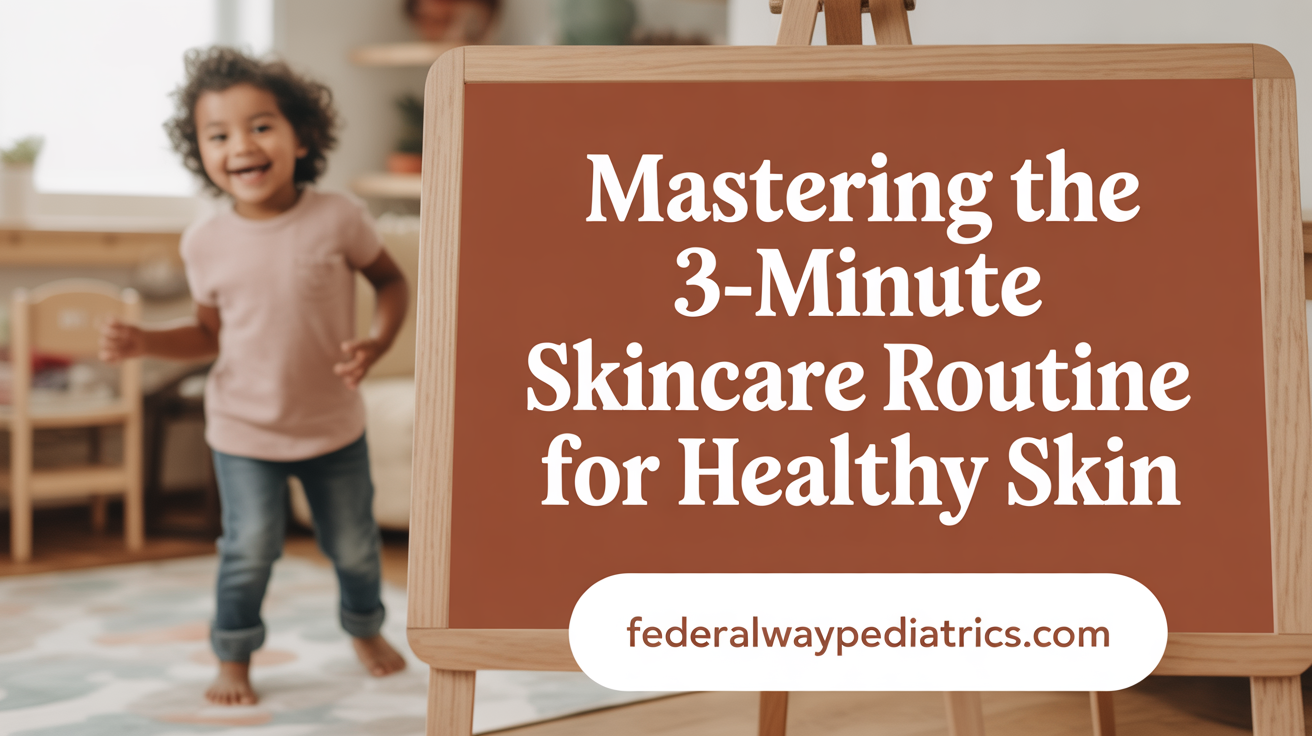
What is the 3-minute rule for eczema?
The 3-minute rule for eczema emphasizes applying moisturizer within three minutes after bathing. This practice is essential because it helps lock in moisture when the skin is still damp, promoting better hydration and aiding in the repair of the skin's natural barrier. Immediate moisturization prevents water from escaping the skin, reducing dryness, irritation, and the risk of flare-ups.
This approach, often part of the "Soak and Seal" method, involves short, lukewarm baths followed by quick application of thick, fragrance-free moisturizers such as ointments, creams, or barrier creams containing ceramides or lipids. These products create a protective layer that maintains hydration longer.
Consistently following the 3-minute rule can significantly decrease the frequency and severity of eczema flare-ups, resulting in healthier, more resilient skin. It is a straightforward yet vital habit that supports ongoing eczema management and overall skin health.
Why are creams and ointments preferred over lotions?
In eczema care, choosing the right type of moisturizer is critical. Creams and ointments are generally more effective than lotions because they contain higher oil content which forms a better barrier over the skin. This barrier helps prevent water loss and shields the skin against irritants.
Lotions are mostly water-based, making them lighter and easier to spread, but they do not provide as much occlusive protection or waterproofing. Therefore, for eczema-prone skin—especially during flare-ups—ointments such as petroleum jelly, Aquaphor, or specific thick creams like CeraVe or Aveeno are recommended.
These thicker formulations hydrate deeply, restore lipids in the skin, and support the skin’s barrier function. Applying ointments and creams regularly, especially after baths, helps to sustain the skin's health and reduce the likelihood of rashes and itching.
Which ingredients are beneficial for eczema-prone skin?
Certain ingredients in moisturizers can significantly benefit skin affected by eczema. Look for products containing:
| Ingredient | Benefit | Additional Notes |
|---|---|---|
| Ceramides | Help restore the skin barrier | Essential for preventing water loss and repairing dry, cracked skin |
| Niacinamide | Reduces inflammation and redness | Supports the skin's healing process |
| Shea Butter | Deep hydration and soothing | Natural emollient that softens skin |
| Prebiotics | Support healthy skin microbiome | Improve skin resilience |
| Glycerin | Draws moisture into the skin | Maintains hydration |
| Hyaluronic Acid | Binds water and retains moisture | Keeps skin plump and hydrated |
Including these ingredients in daily moisturizers can improve skin health and help control eczema symptoms effectively.
How to apply moisturizers on the face and body?
Proper application techniques maximize the benefits of moisturizers. Apply generously on all affected skin areas, both on the face and body.
- Use a dollop of moisturizer and rub it gently into the skin, ensuring full coverage.
- Focus on dry, cracked, or irritated areas.
- For the face, choose gentle, fragrance-free products suitable for sensitive skin and avoid the eye area.
- For the body, heavier creams or ointments can be used, especially after bathing.
Always apply over slightly damp skin to seal in moisture better. During flare-ups, reapply as often as needed to keep the skin hydrated.
Is layering moisturizers over prescribed medications recommended?
A common practice to enhance eczema treatment involves layering moisturizers over topical medications. This layering helps to lock in the medication, improves absorption, and maintains hydration.
- Apply prescribed topical steroids or other medications first, as directed by a healthcare provider.
- Wait a few minutes for the medication to absorb.
- Follow with a thick moisturizer or ointment to seal in the medication and prevent moisture loss.
This combined approach ensures that the medication remains effective while supporting overall skin hydration and barrier repair.
Specialized Care for Facial Eczema in Children
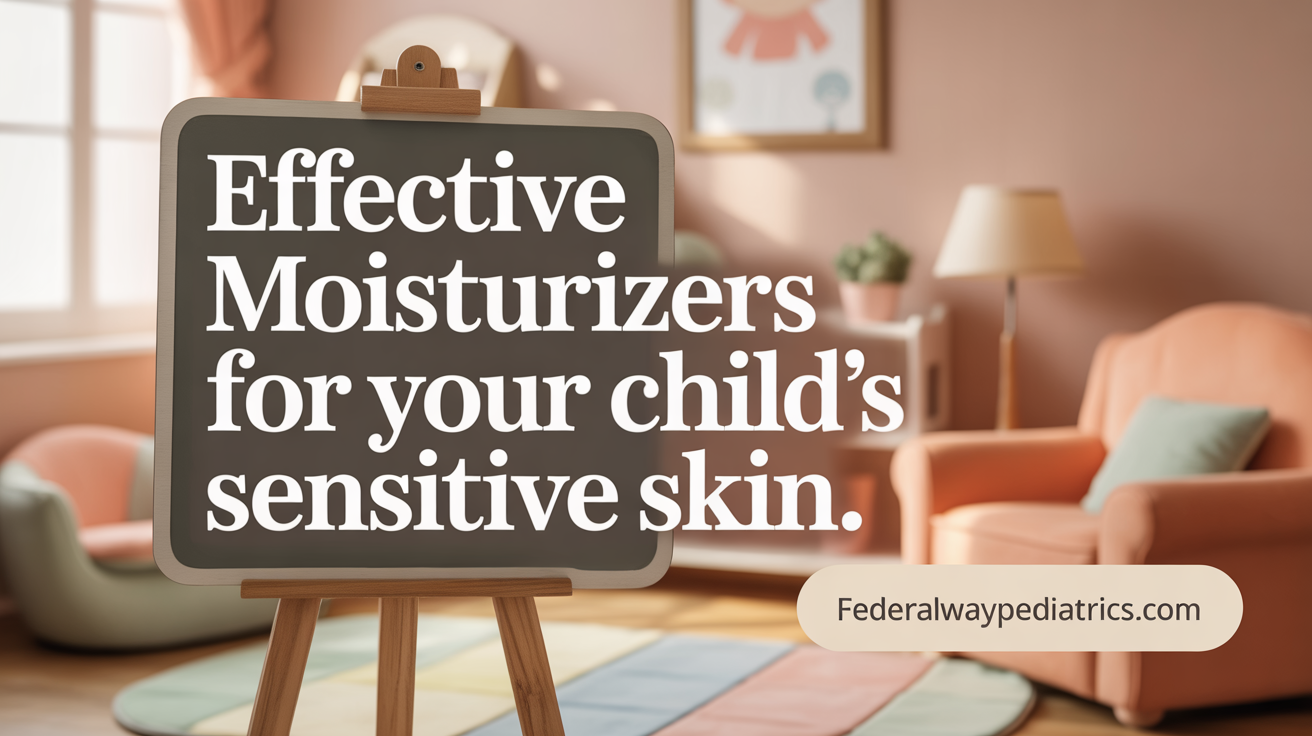
What types of moisturizers are recommended for a child's face with eczema?
For children with facial eczema, selecting the right moisturizer is crucial. Thick, occlusive products like petroleum jelly or mineral oil are highly effective because they create a protective barrier that helps seal in moisture and shield sensitive skin from irritants.
In addition, gentle absorbent creams formulated without fragrances, dyes, or alcohol—such as those containing oats, shea butter, glycerin, or vitamin E—are excellent choices. These ingredients support skin healing, soothe irritation, and reinforce the skin’s natural barrier.
Lotions are generally less suitable because they contain higher water content and sometimes alcohol, which can further dry out the delicate facial skin affected by eczema. Instead, opt for ointments and thick creams, applying them at least once daily. Applying moisturizer immediately after washing or cleansing helps lock in hydration.
Always choose products labeled as fragrance-free and designed for sensitive skin. Consulting a dermatologist can provide personalized recommendations tailored to the child's specific skin needs. Proper moisturizer use not only manages symptoms but helps prevent flare-ups, ensuring healthier skin over time.
Managing Triggers and Environment to Support Skincare Routines
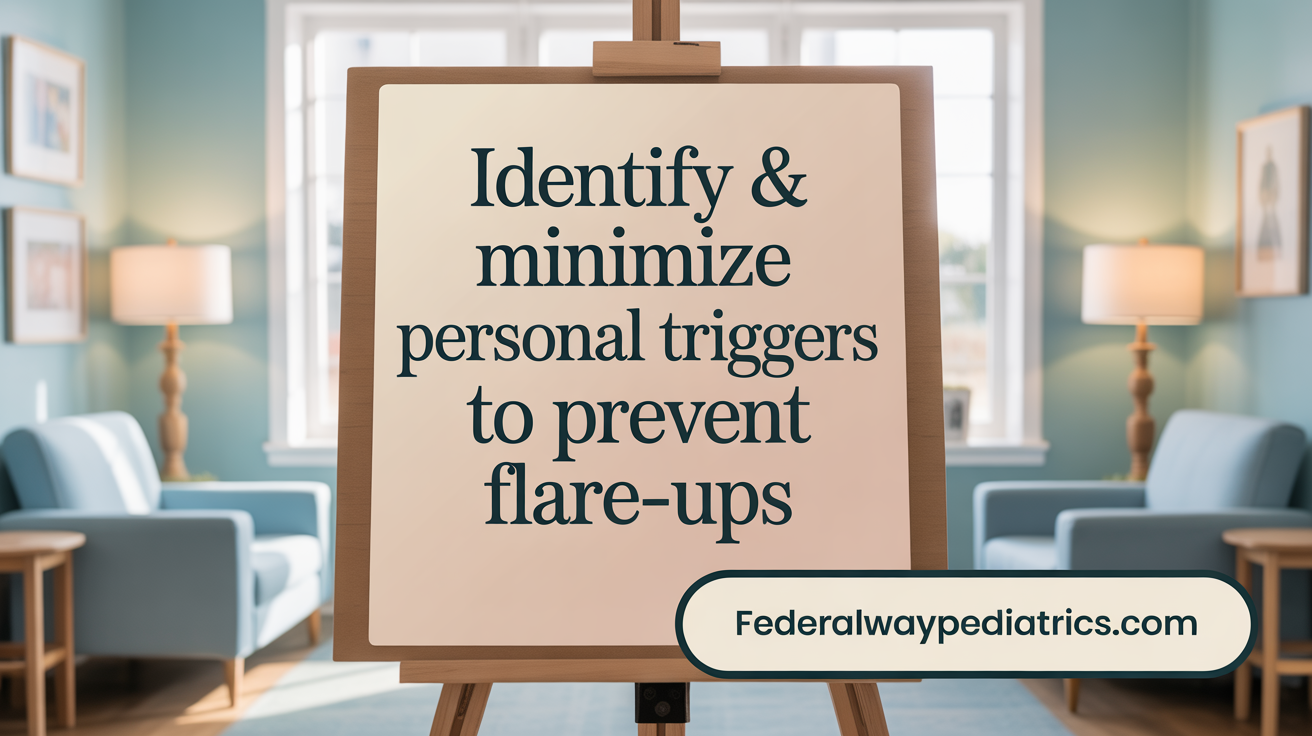
What are common eczema triggers such as allergens and irritants?
Eczema can be worsened by various triggers found in the environment. Common irritants include fragrances, harsh soaps, and certain cleaning products. Allergens such as dust mites, pet dander, pollen, mold, and tobacco smoke can also prompt flare-ups. Identifying and avoiding these triggers is crucial to maintaining healthy skin.
What are the benefits of hypoallergenic detergents and fabrics?
Using hypoallergenic, fragrance-free laundry detergents can reduce skin irritation. Washing clothes in such detergents helps eliminate residual chemicals that can irritate sensitive skin. Moreover, choosing clothing made from gentle fabrics like cotton, linen, or silk minimizes the risk of irritation.
How do clothing choices help minimize irritation?
Dress children in soft, breathable fabrics that don’t trap heat or sweat, such as 100% cotton. Avoid wool, synthetic fibers, and tight-fitting clothes that can cause rubbing and irritation. Always wash new clothes before their first wear to remove any chemicals or dyes.
How can maintaining suitable indoor humidity and temperature support skin health?
Keeping indoor humidity levels between 40-60% prevents the skin from drying out. Use humidifiers in dry environments and ensure the temperature is comfortable, avoiding excessive heat or cold, which can trigger eczema symptoms.
What strategies can reduce scratching, including nail care and gloves?
Scratching exacerbates eczema and can lead to skin infections. Keep nails short and smooth, and consider applying cotton gloves at night to prevent damage from scratching during sleep. These simple steps help protect the skin while managing itchiness more effectively.
Why is cleaning and avoiding pet dander, dust mites, and pollutants important?
Regular cleaning reduces dust, mold, and pet dander in the home, which are common eczema triggers. Use a vacuum with a HEPA filter and wash bedding frequently. Keeping pets out of the child's bedroom and maintaining a clean living environment can substantially reduce exposure to irritating substances.
Supporting Children Through Engaging and Consistent Skincare Practices
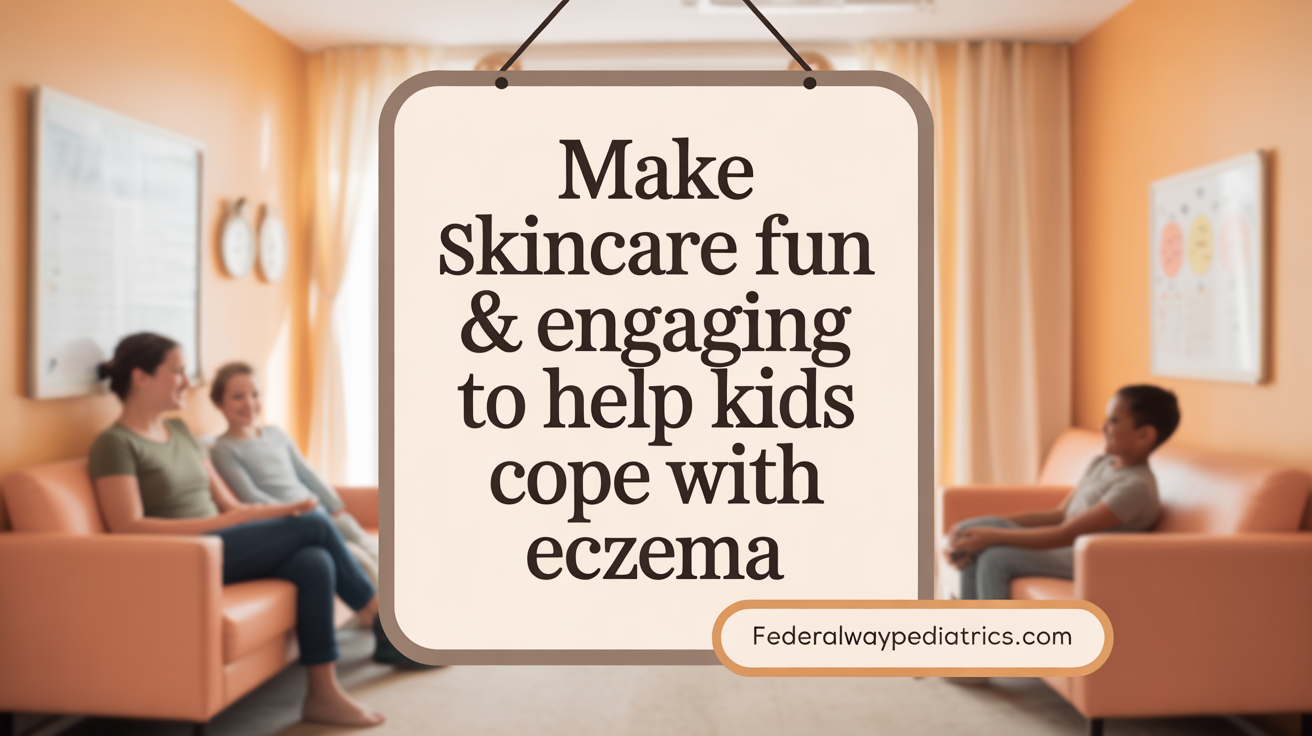
How can talking children through their routines help with eczema management?
Explaining skincare routines to preschoolers helps them understand how these practices can reduce itchiness and strengthen their skin. When children know what to expect and how their skincare works, they feel more in control, which can make routines smoother and less stressful.
How can I make skincare routines more engaging for preschoolers?
Using games, songs, and visual schedules can turn skincare into a fun activity. For example, singing a song while applying moisturizer or using colorful pictures to show each step can help children learn and remember their routines. These methods make the experience interactive and less intimidating.
What positive reinforcement techniques work best?
Praising children when they follow their routines or giving small rewards, like stickers, can motivate them to stick with skincare routines. Positive feedback encourages independence and helps children associate skincare with positive experiences.
How can offering choices promote independence?
Allowing children to choose aspects of their skincare, such as the area to moisturize or which hat to wear outside, gives them a sense of control. This empowerment makes children more willing to participate actively and feel confident about caring for their skin.
Why is routine consistency important for managing eczema?
Keeping skincare routines the same every day—such as bathing in lukewarm water, applying moisturizer immediately after, and using the same gentle cleansers—helps prevent flare-ups. Consistent routines reinforce good habits and improve the skin’s health over time.
When should I consult healthcare professionals?
Working with a dermatologist can help tailor routines specifically to your child's needs. Medical advice ensures the right products are used, medications are applied correctly, and any changes in symptoms are properly managed. Regular check-ins support effective eczema control.
| Strategies for Supporting Eczema Care in Children | Methods | Benefits |
|---|---|---|
| Explaining routines | Talking through steps | Builds understanding and control |
| Making routines fun | Games, songs, visual schedules | Increases engagement and learning |
| Using positive reinforcement | Praise, rewards | Encourages consistency and independence |
| Offering choices | Pick moisturizer, hats, etc. | Boosts confidence and cooperation |
| Establishing routines | Daily, predictable practices | Prevents flare-ups and manages symptoms |
| Professional guidance | Dermatologist consultations | Ensures tailored, effective care |
Empowering Families for Effective Pediatric Eczema Management
Establishing a thoughtful, gentle, and consistent daily skincare routine is the cornerstone of managing pediatric eczema effectively. Through careful cleansing, timely and appropriate moisturization, and attention to environmental triggers, families can significantly reduce flare-ups and soothe irritable skin. Involving children in their care with supportive strategies helps foster understanding and cooperation, making routines less stressful and more successful. Collaboration with healthcare professionals ensures personalized treatment, keeping pace with the child’s evolving needs. With persistence and care, families can help children with eczema achieve healthier, more comfortable skin and better quality of life.
References
- Establishing an Eczema Care Routine for Your Preschooler
- Skin Care for Kids with Atopic Dermatitis - Happy Skin, PLLC
- How to Build a Simple Eczema-Friendly Skincare Routine for Kids
- Building a Skincare Routine for Eczema - La Roche-Posay
- How to Treat & Control Eczema (Atopic Dermatitis) Rashes in Children
- [PDF] Atopic Dermatitis 101 for Parents - Pediatric Health Network
- How to Build a Smart Skin-Care Routine When Managing Eczema
